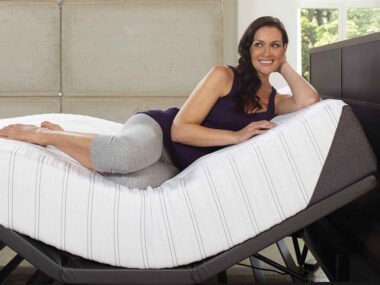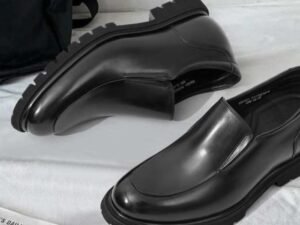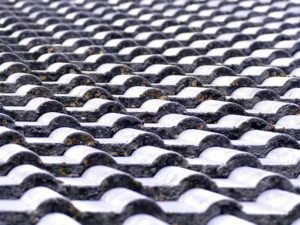As the temperatures drop, staying warm inside becomes a priority. A well-maintained home can help retain warmth and keep energy costs under control. Simple steps like sealing gaps, upgrading insulation, and maintaining your heating system can make a big difference in keeping your home comfortable throughout the winter.
Ensuring your heating system runs efficiently before winter arrives can prevent costly repairs and sudden breakdowns. This guide lists expert tips to help you keep your home cozy all season long.
Seal Gaps and Insulate Your Home
Cold air can easily enter through gaps around doors, windows, and other openings. This makes your home colder and forces your system to work harder. Sealing these gaps with weatherstripping or caulking can help reduce heat loss. Adding insulation to walls, attic, and floors is crucial in keeping warmth inside. Proper insulation ensures that your home stays comfortable without overworking your heating system. Investing in good insulation and sealing air leaks can significantly save energy bills during the colder months.
Have a Professional Inspect Your Heater Before the Weather Cools
Before winter arrives, it’s essential to have your system checked by a professional. A routine inspection can help identify issues that could lead to breakdowns when temperatures drop. Regular servicing can improve efficiency, extend the life of your unit, and keep your home consistently warm. Relying on experts like Bellows Plumbing Heating & Cooling ensures comprehensive inspection and repair in the case of faults. Getting an early inspection can prevent unexpected issues and keep your home comfortable throughout winter.
Regular Furnace Maintenance is a Must
A furnace that isn’t well-maintained may not work efficiently, leading to higher energy costs. Dust and debris can build up in the filters, reducing airflow and forcing the unit to work harder. Replacing filters every one to three months can improve performance and keep your home warm. Annual tune-ups from a qualified technician can also help prevent major issues. They can check for wear and tear, clean essential components, and ensure everything is operating safely. Routine maintenance not only improves efficiency but also helps your system last longer.
Upgrade to a Smart Thermostat
A smart thermostat can help you manage your home’s temperature more efficiently. These devices allow you to set schedules, adjust settings remotely, and learn your habits to optimize energy use. This means you can reduce unnecessary energy consumption while keeping your home at a comfortable temperature. Installing a smart thermostat is a simple way to lower heating costs without sacrificing comfort. Many models also provide energy reports, helping you track usage and find ways to improve efficiency. A smart thermostat is a great option if you’re looking for an easy upgrade that provides long-term savings.
Optimize Your Radiators and Vents
Blocked or dirty vents can make it harder for warm air to circulate properly. It’s important to check that furniture or curtains aren’t covering vents, as this can prevent even heat distribution. Keeping vents clean and free of dust will also help improve airflow and efficiency. Regular maintenance can enhance the performance of homes with radiators. Bleeding radiators remove trapped air, allowing them to work more effectively. Ensuring proper airflow and keeping vents and radiators clear can help maintain consistent temperature throughout your home.
Use Heavy Curtains and Rugs
Windows and floors can be a major source of heat loss during winter. Even if your windows are closed, cold air can still seep in, making your home feel colder. Using thick, insulated curtains helps trap warmth inside while blocking cold air from entering. Keeping curtains closed at night can make a big difference in maintaining a comfortable temperature. Similarly, adding rugs to bare floors provides an extra layer of insulation. Hardwood and tile floors can get cold in winter, making rooms feel less cozy. Using area rugs or carpets helps keep floors warmer and reduces the need to turn up the thermostat.
Utilize Ceiling Fans for Heat Distribution
Many people associate ceiling fans with cooling, but they can also help distribute warm air. Since warm air rises, it tends to collect near the ceiling, leaving the lower part of the room cooler. You can push that warm air back down by setting your ceiling fan to rotate clockwise at a low speed. This simple trick helps maintain an even temperature throughout your home. It allows your system to work more efficiently, reducing energy costs. Just remember to switch the fan direction back to counterclockwise when the weather starts to change.
Consider a Heat Pump for Efficiency
A heat pump is a highly efficient way to maintain a comfortable temperature during winter. Unlike traditional furnaces that generate heat, it transfers heat from outside to inside. This method requires less energy and can lower utility bills while keeping your home warm. Modern varieties work well even in colder climates and can be a great alternative to older systems. If your current system is outdated or inefficient, upgrading to a heat pump could be cost-effective. Consulting a professional can help determine if this option is right for your home.
Maintain Your Fireplace for Maximum Warmth
A fireplace can be a great source of extra warmth during cold months, but it requires proper maintenance. Regular cleaning is necessary to prevent soot buildup and improve efficiency if you have a wood-burning fireplace. For gas fireplaces, checking the vents and inspecting the burner ensures safe operation. If your fireplace isn’t in use, make sure the damper is closed to prevent warm air from escaping. Investing in a fireplace insert can also help direct more heat into the room instead of losing it through the chimney. Caring for your fireplace can enhance its efficiency and keep your home comfortable.
Prepare for Power Outages with Backup
Unexpected power outages can leave you without a functioning heating system. To stay warm during an outage, consider having backup options such as space heaters, generators, or wood stoves. These can provide temporary warmth until power is restored. It’s also important to have extra blankets, appropriate clothing, and emergency supplies on hand. If you rely on electric heating, having an alternative source of warmth ensures that you and your family stay comfortable during extreme weather conditions.
Keeping your home warm during winter doesn’t have to be difficult or expensive. Small adjustments like sealing gaps, using insulation, and maintaining your system can make a big difference. Taking proactive steps before cold weather arrives ensures a comfortable and energy-efficient home.










